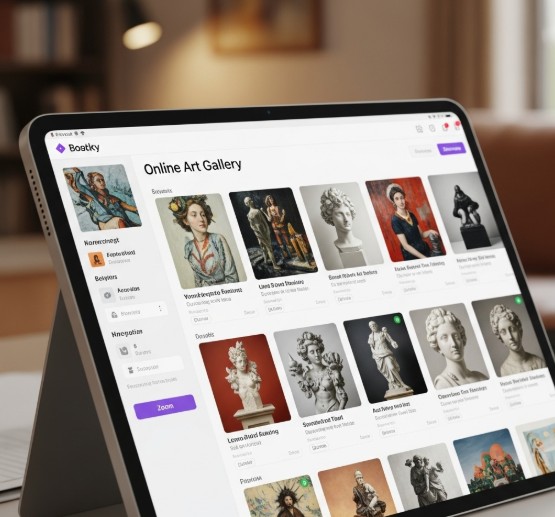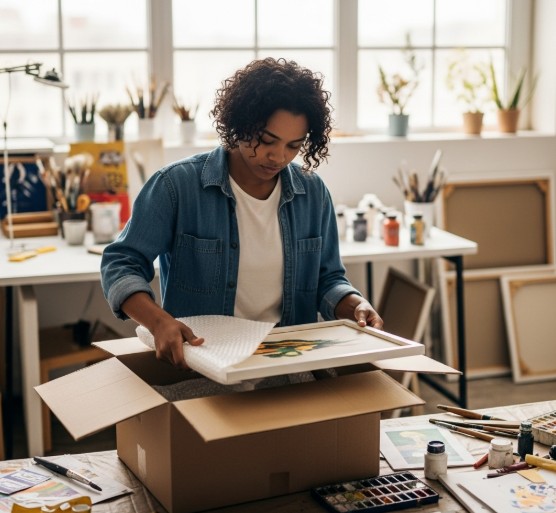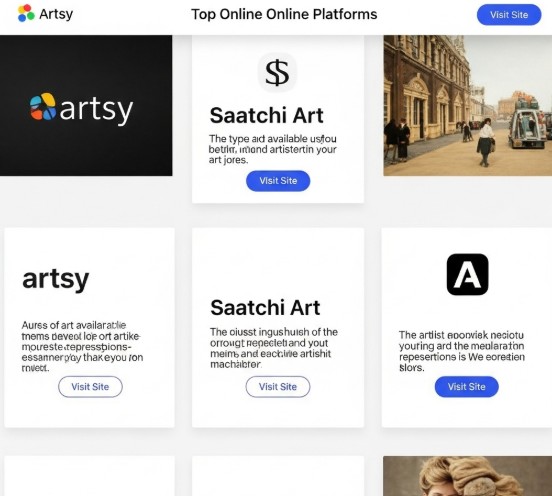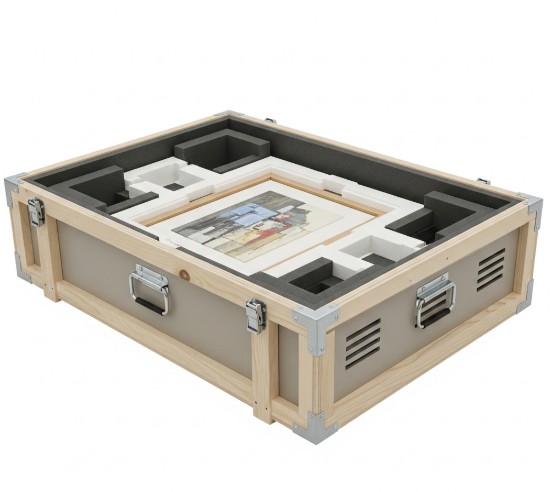Tips for Buying and Selling Art Online
Introduction
In today’s fast-evolving digital world, the art market has found a new home — online. Collectors, curators, and artists now turn to digital platforms to discover, buy, and sell art with unprecedented convenience and global reach. Whether you’re an art lover looking to expand your collection or an artist eager to connect with international buyers, understanding the nuances of buying and selling art online is essential.
This comprehensive guide will walk you through everything you need to know about online art transactions. From researching trustworthy platforms and pricing artwork accurately to building buyer confidence and handling shipping logistics, we cover practical, actionable tips for navigating the online art market successfully.

Why Buy and Sell Art Online?
The transition to digital platforms has revolutionized the art world. Here’s why buying and selling art online has become the norm:
- Global Reach: Art can now reach collectors across continents.
- Convenience: Browse, compare, and purchase from anywhere.
- Cost-Efficiency: No need for physical gallery space or travel.
- Increased Exposure: Artists gain visibility without traditional representation.
- Transparency and Accessibility: Online listings often include artist bios, provenance, and pricing.
The growth of e-commerce and the pandemic-driven shift to online experiences have further cemented the role of digital art marketplaces in the global art economy.

Choosing the Right Online Platform
Selecting the right platform is crucial for both buyers and sellers. The platform must align with your goals, offer security, and provide the tools needed for a smooth transaction.
For Sellers:
- Saatchi Art: Global exposure, marketing support, and easy listing tools.
- Etsy: Ideal for emerging artists and those selling affordable or handmade art.
- Artfinder: Focused on independent artists with curated selections.
- Instagram: Great for building a following and direct-to-customer sales.
- Own Website: Gives full control over branding, pricing, and customer relationships.
For Buyers:
- 1stDibs and Artnet: High-end art with provenance and established sellers.
- Saatchi Art and Singulart: Contemporary and emerging art with global shipping.
- Online Auctions (e.g., Christie’s): For rare and investment-grade pieces.
Make sure to research the platform’s commission fees, payment systems, customer base, and return policies before listing or buying.
External Resource: Visit Artsy’s guide to collecting art online for insights on building a collection safely and smartly.

Tips for Buying Art Online
Buying art online can be thrilling and rewarding if approached wisely. Here are some key tips to help you make informed decisions:
1. Know Your Taste and Budget
Start by exploring different styles, mediums, and artists to understand what resonates with you. Set a clear budget, including potential shipping and framing costs.
2. Research the Artist
Investigate the artist’s background, exhibition history, reviews, and collector base. Authenticity and artistic credibility matter, especially for investment-grade purchases.
3. Examine the Artwork Closely
Look for high-resolution images, close-up shots, and alternate angles. Don’t hesitate to ask for additional images or a video preview.
4. Read the Description and Specifications
Make sure you understand the artwork’s size, medium, support (canvas, paper, wood), and condition. These affect both aesthetics and value.
5. Verify Return and Shipping Policies
Before committing, read the platform’s return policy, estimated delivery times, and shipping terms. Ensure insurance is included during transit.
6. Ask Questions
Reach out to the seller or platform with questions. A genuine seller will gladly provide clarity on anything from provenance to packaging.
7. Trust Your Instincts
Art is emotional. While due diligence is important, it’s okay to follow your gut when a piece truly speaks to you.

Tips for Selling Art Online
Selling art online demands a mix of creativity, marketing skills, and business acumen. Whether you’re an independent artist or gallery owner, these tips will help you stand out and succeed.
1. Professional Presentation
Use high-quality images taken in natural lighting. Showcase close-ups, framed/unframed views, and contextual shots (e.g., artwork on a wall).
2. Write Compelling Descriptions
Your listing should include the title, medium, size, year, and story behind the piece. Use engaging language that connects with buyers emotionally.
3. Price Strategically
Consider your experience level, demand, size, and medium when pricing. Research similar works and adjust based on platform commissions.
4. Build Credibility
Maintain a consistent online presence. Share artist statements, awards, reviews, exhibitions, or media features to gain buyer trust.
5. Offer Secure Payment Options
Choose platforms that offer escrow or secure payment processing. If selling independently, integrate reliable gateways like Stripe or PayPal.
6. Package and Ship Carefully
Use sturdy packaging, bubble wrap, and corner protectors. Include a certificate of authenticity and tracking information. Insure the package for its full value.
7. Communicate Professionally
Respond promptly to buyer inquiries, follow up after delivery, and ask for testimonials. Building relationships encourages repeat sales.

Common Mistakes to Avoid
Both buyers and sellers can fall into traps that affect the success of online transactions. Here are a few pitfalls to avoid:
- Ignoring authenticity: Always verify certificates or provenance documents.
- Overpricing or underpricing: Know your market.
- Low-quality photos: These can ruin buyer interest.
- Lack of branding: Artists should develop a recognizable visual identity.
- Neglecting SEO: Use keywords to make your listings searchable.
Digital Marketing Tips for Artists
Visibility is everything in the online space. Use these tactics to boost your reach:
- Instagram and Pinterest: Share your work regularly with relevant hashtags and storytelling.
- Email Marketing: Build a newsletter to keep collectors engaged.
- SEO Optimization: Use keywords in titles, tags, and descriptions.
- Blogging: Share behind-the-scenes stories, process insights, and art news.
- Collaborations: Team up with influencers or fellow artists to cross-promote.
Pro Tip: Platforms like ISKUSS combine curated excellence with cultural relevance, offering collectors a refined selection and artists a global audience with built-in trust.

Handling Shipping and Returns
Proper logistics can make or break the experience for buyers and sellers.
For Sellers:
- Use professional-grade materials (sturdy boxes, corner protectors, acid-free paper).
- Choose reliable carriers (FedEx, DHL, UPS).
- Offer international shipping with customs declarations and insurance.
- Be transparent about handling time.
For Buyers:
- Confirm expected delivery date and insurance.
- Track the shipment closely.
- Open the package carefully and inspect it upon arrival.
Dealing with Returns:
- Offer a reasonable return window (7–14 days).
- Be upfront about return shipping costs.
- Issue refunds promptly and professionally.

Legal and Financial Considerations
Art sales, like any business, have legal and tax implications:
- Sales Tax: Understand regional tax laws for online sales.
- Copyright: Selling art doesn’t transfer copyright unless specified.
- Resale Rights: Some regions enforce resale royalties for artists.
- Contracts: Use written agreements for commissions or high-value sales.
Consult an art attorney or financial advisor if you’re planning to sell art online as a business.
The Future of Buying and Selling Art Online
The online art market is continuously evolving with emerging technologies:
- AR and VR: Previewing artwork in real spaces through mobile devices.
- Blockchain and NFTs: Digital ownership and secure provenance tracking.
- AI Curation: Personalized recommendations for buyers.
As technology advances, accessibility and transparency will become even stronger pillars of the online art trade, making it more inclusive and innovative.
ISKUSS: A Trusted Destination for Art Collectors
At ISKUSS, we are passionate about showcasing artworks that are not only visually compelling but deeply rooted in cultural expression. Our online platform caters to global collectors looking for unique, high-quality pieces — with clarity, transparency, and no gimmicks.
Explore our curated collection today and experience the art of online buying with trust and taste.
Conclusion
Buying and selling art online has transformed the art world, breaking down traditional barriers and enabling unprecedented global interaction. With the right knowledge, tools, and practices, collectors can discover inspiring works from around the world, and artists can thrive independently.
Whether you’re making your first online purchase or preparing to list your masterpiece for sale, these tips ensure that you engage the process with confidence, creativity, and care. The digital art world is vast and dynamic — and you’re now well-equipped to navigate it.

